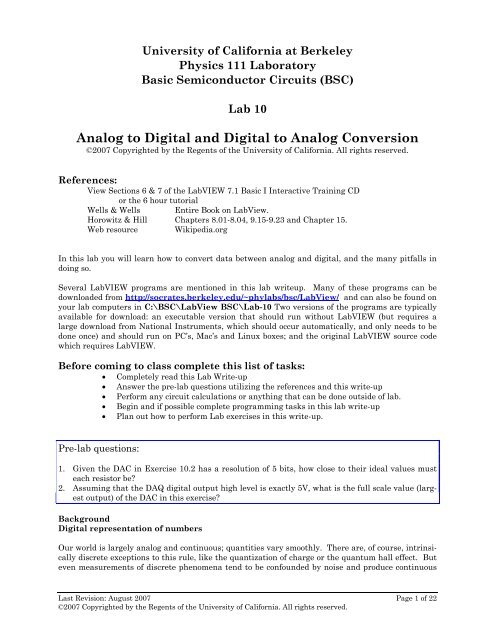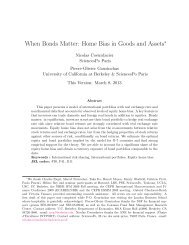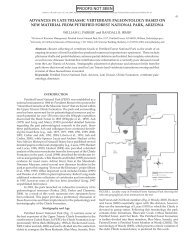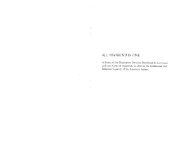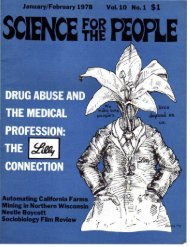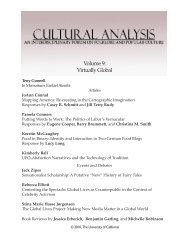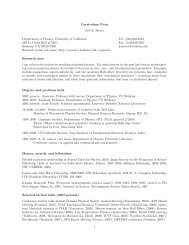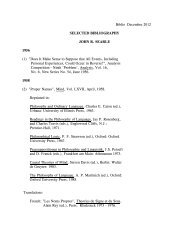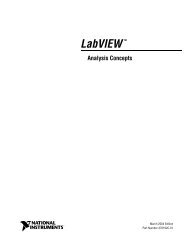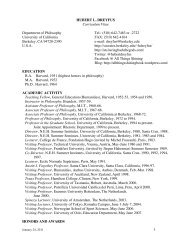Physics 111 ~ BSC Student Evaluation of Lab Write-Up
Physics 111 ~ BSC Student Evaluation of Lab Write-Up
Physics 111 ~ BSC Student Evaluation of Lab Write-Up
You also want an ePaper? Increase the reach of your titles
YUMPU automatically turns print PDFs into web optimized ePapers that Google loves.
University <strong>of</strong> California at Berkeley<br />
<strong>Physics</strong> <strong>111</strong> <strong>Lab</strong>oratory<br />
Basic Semiconductor Circuits (<strong>BSC</strong>)<br />
<strong>Lab</strong> 10<br />
Analog to Digital and Digital to Analog Conversion<br />
©2007 Copyrighted by the Regents <strong>of</strong> the University <strong>of</strong> California. All rights reserved.<br />
References:<br />
View Sections 6 & 7 <strong>of</strong> the <strong>Lab</strong>VIEW 7.1 Basic I Interactive Training CD<br />
or the 6 hour tutorial<br />
Wells & Wells Entire Book on <strong>Lab</strong>View.<br />
Horowitz & Hill Chapters 8.01-8.04, 9.15-9.23 and Chapter 15.<br />
Web resource Wikipedia.org<br />
In this lab you will learn how to convert data between analog and digital, and the many pitfalls in<br />
doing so.<br />
Several <strong>Lab</strong>VIEW programs are mentioned in this lab writeup. Many <strong>of</strong> these programs can be<br />
downloaded from http://socrates.berkeley.edu/~phylabs/bsc/<strong>Lab</strong>View/ and can also be found on<br />
your lab computers in C:\<strong>BSC</strong>\<strong>Lab</strong>View <strong>BSC</strong>\<strong>Lab</strong>-10 Two versions <strong>of</strong> the programs are typically<br />
available for download: an executable version that should run without <strong>Lab</strong>VIEW (but requires a<br />
large download from National Instruments, which should occur automatically, and only needs to be<br />
done once) and should run on PC’s, Mac’s and Linux boxes; and the original <strong>Lab</strong>VIEW source code<br />
which requires <strong>Lab</strong>VIEW.<br />
Before coming to class complete this list <strong>of</strong> tasks:<br />
• Completely read this <strong>Lab</strong> <strong>Write</strong>-up<br />
• Answer the pre-lab questions utilizing the references and this write-up<br />
• Perform any circuit calculations or anything that can be done outside <strong>of</strong> lab.<br />
• Begin and if possible complete programming tasks in this lab write-up<br />
• Plan out how to perform <strong>Lab</strong> exercises in this write-up.<br />
Pre-lab questions:<br />
1. Given the DAC in Exercise 10.2 has a resolution <strong>of</strong> 5 bits, how close to their ideal values must<br />
each resistor be?<br />
2. Assuming that the DAQ digital output high level is exactly 5V, what is the full scale value (largest<br />
output) <strong>of</strong> the DAC in this exercise?<br />
Background<br />
Digital representation <strong>of</strong> numbers<br />
Our world is largely analog and continuous; quantities vary smoothly. There are, <strong>of</strong> course, intrinsically<br />
discrete exceptions to this rule, like the quantization <strong>of</strong> charge or the quantum hall effect. But<br />
even measurements <strong>of</strong> discrete phenomena tend to be confounded by noise and produce continuous<br />
Last Revision: August 2007 Page 1 <strong>of</strong> 22<br />
©2007 Copyrighted by the Regents <strong>of</strong> the University <strong>of</strong> California. All rights reserved.
<strong>Physics</strong> <strong>111</strong> <strong>BSC</strong> <strong>Lab</strong>oratory <strong>Lab</strong> 10 <strong>Lab</strong>VIEW Programming<br />
data. Internally, however, modern computers 1 deal only with discrete quantities; specifically, they<br />
deal only with quantities take on only two values: on or <strong>of</strong>f. This so-called digital representation <strong>of</strong><br />
information has many advantages over analog representations, most importantly that digital information<br />
is relatively immune to noise. If a 0, or <strong>of</strong>f state, is represented by a voltage near 0, and a 1,<br />
or on state is represented by a voltage near 4 (a scheme used by a common family <strong>of</strong> digital devices<br />
called TTL logic), then noise is unlikely to cause a fluctuation great enough to confuse the two.<br />
Because computers can only represent two states, numbers are stored in binary, or base 2. The digits<br />
in a base 2 number are called bits, thus, a typical number in base 2 number is a collection <strong>of</strong> bits<br />
like 01011010. Numbers are decoded using a power series in 2:<br />
∞<br />
∑<br />
n=<br />
0<br />
n<br />
a 2 = a 2 + a 2 + a 2 + a 2 + L<br />
n<br />
0 1 2 3<br />
0 1 2 3<br />
where the an<br />
are the series <strong>of</strong> bits used to represent the number. Thus,<br />
Base<br />
10<br />
0 1 2 3 4 5 6 7<br />
Base 2 00 00 01 01 10 10 11 11<br />
0 1 0 1 0 1 0 1<br />
The more bits used, the larger the integer number that can be represented. Non-integer numbers are<br />
represented by multiplying in an appended exponent; thus, the more bits, the greater the precision<br />
<strong>of</strong> the number.<br />
Eight bits taken together constitute a byte, and computers are typically organized around byte processing,<br />
not bit processing.<br />
Conversion<br />
Since the real world is analog, but the computer world is binary, we need to be able to convert signals<br />
between the two. Devices that change an analog signal to a digital signal are called analog to<br />
digital converters (ADC). Devices that change a signal the other way, from digital to analog, are<br />
called digital to analog converters (DAC). Both are important; DACs are used to control experiments,<br />
while ADCs are used to read data from experiments.<br />
1 Originally, computers were analog, and did computations in ways similar to the way that you did<br />
computations in your RMS converters. Programming was done by wiring patch panels, as can be<br />
seen in the photos <strong>of</strong> the analog computers below.<br />
Last Revision: August 2007 Page 2 <strong>of</strong> 21<br />
©2007 Copyrighted by the Regents <strong>of</strong> the University <strong>of</strong> California. All rights reserved.
<strong>Physics</strong> <strong>111</strong> <strong>BSC</strong> <strong>Lab</strong>oratory <strong>Lab</strong> 10 <strong>Lab</strong>VIEW Programming<br />
Sampling<br />
Real-world signals are continuous in time as well as level. Thus, to represent a time-varying signal,<br />
we build up a table <strong>of</strong> the value <strong>of</strong> the signal as a function <strong>of</strong> time, for example:<br />
Time Signal<br />
0 1.000<br />
0.125 0.649<br />
0.250 -0.156<br />
0.375 -0.853<br />
0.500 -0.951<br />
0.625 -0.383<br />
0.750 0.454<br />
0.875 0.972<br />
1.000 0.809<br />
1.125 0.078<br />
1.250 -0.707<br />
1.375 -0.997<br />
1.500 -0.588<br />
1.625 0.233<br />
1.750 0.891<br />
1.875 0.924<br />
2.000 0.309<br />
These values are called samples.<br />
Last Revision: August 2007 Page 3 <strong>of</strong> 21<br />
©2007 Copyrighted by the Regents <strong>of</strong> the University <strong>of</strong> California. All rights reserved.
<strong>Physics</strong> <strong>111</strong> <strong>BSC</strong> <strong>Lab</strong>oratory <strong>Lab</strong> 10 <strong>Lab</strong>VIEW Programming<br />
We can better visualize sample tables with a graph. The curve in upper plot <strong>of</strong> the graph below<br />
represents a signal to be sampled. The dots are the samples. If we then use the samples to represent<br />
the signal, we get the signal in the lower plot, where the points are joined by the dashed line.<br />
Sampling always approximates the signal. How accurate is the representation? There are two basic<br />
limits on the accuracy, resolution and sampling rate.<br />
Resolution<br />
The number <strong>of</strong> bits available to represent each sample is called the resolution. In base 2, the number<br />
<strong>of</strong> levels that can be represented by an n bit sample is 2 n . Thus, for 8 bits (the number <strong>of</strong> bits in<br />
a typical low end converter) there are 256 levels, while for 24 bits (the maximum common 2 converter<br />
resolution) there are 16,777,216 levels.<br />
It is rare that we would need precisions better than 1 part in 1000, or 10 bits. What then is the<br />
point <strong>of</strong> going to higher resolution? Higher resolution provides greater range. It is uncommon for<br />
the signal amplitude to exactly match the full-scale value <strong>of</strong> the converter. Typically, we might have<br />
a margin <strong>of</strong> over a factor <strong>of</strong> ten; perhaps 4 bits. Thus, to get 10 bit accuracy we would need a 14 bit<br />
converter.<br />
Even if the maximum amplitude <strong>of</strong> our signal matches the full-scale value <strong>of</strong> the converter, the signal<br />
amplitude is likely to vary significantly over time. (This is called “dynamic range.”) For instance,<br />
the sound level from a symphony orchestra varies from about 40dB to 130dB. (Sounds at<br />
130dB are rare; the “cannon” in the Tchaikovsky’s 1812 overture are one example.) Consequently,<br />
the amplitude <strong>of</strong> the sound waves varies by a factor <strong>of</strong> about 30,000. This seemingly requires about<br />
15 bits. But with 15 bits, the lowest levels would be represented by just one bit level changes. A<br />
sine waves represented by only one bit becomes a square wave. We would prefer to better represent<br />
low signals; perhaps six bits for the lowest levels. Thus, we would need a 21 bit converter to well<br />
represent the signal. 3 However, CDs use only 16 bits. 4 To record symphonic music without distortion,<br />
engineers typically compress the signal; the quietest passages are made louder, while the loudest<br />
passages are s<strong>of</strong>tened.<br />
2 The National Instruments PXI-4461, available for a mere $3995.<br />
3 In principle, using floating point numbers (a mantissa and an exponent) would better represent the<br />
music. But floating point converters are difficult to make and very rare. After the signal is sampled,<br />
however, can convert the numbers to floating point without much loss <strong>of</strong> information. This is one <strong>of</strong><br />
the tricks used in compressing music in schemes like mp3s.<br />
4 The program Wave_Quantization illustrates the effects <strong>of</strong> resolution on an audible signal.<br />
Last Revision: August 2007 Page 4 <strong>of</strong> 21<br />
©2007 Copyrighted by the Regents <strong>of</strong> the University <strong>of</strong> California. All rights reserved.
<strong>Physics</strong> <strong>111</strong> <strong>BSC</strong> <strong>Lab</strong>oratory <strong>Lab</strong> 10 <strong>Lab</strong>VIEW Programming<br />
A higher resolution also makes it easier to extract signals from noise. Say we are using a 10 bit<br />
ADC to digitize a small signal which is masked by noise whose level is 10 bits. We could not amplify<br />
the signal because the noise would cause our converter to saturate. You might think that the signal<br />
would have to be larger than one bit to be detected. Curiously, if there were no noise, this would be<br />
true. But with noise, we can detect signals which are smaller than one bit.<br />
DC.<br />
5 Still, its much better<br />
not to have to rely on the noise to make the signal measurable, and we would be better <strong>of</strong>f with a<br />
higher precision A<br />
Sampling Rate<br />
The effects <strong>of</strong> the sampling too slowly are more subtle than the effects <strong>of</strong> limited resolution. When<br />
we sample too slowly, we do not get an adequate representation <strong>of</strong> the signal; in fact, we may be<br />
badly confused by spurious signals. These effects were codified by Nyquist, who determined that:<br />
A signal can only be perfectly represented by a samples taken at more than twice<br />
the maximum frequency in the signal.<br />
Thus if we sample at ratef s , then the signal must contain no information with frequencies higher<br />
than f s 2 . This latter frequency is called the Nyquist Frequency.<br />
If we violate Nyquist’s theorem we get aliasing; signals at higher frequencies get shifted down to<br />
lower frequencies. For example, if we have a sinusoidal signal with frequency 1Hz, and sample it at<br />
frequency 10.4Hz, we get a good representation <strong>of</strong> the signal (but note that the peaks are still<br />
slightly distorted☺<br />
But if we sample the signal below the minimum sample frequency for this wave <strong>of</strong> 2 Hz, we get an<br />
aliased signal. For instance, if we sample the signal at a frequency <strong>of</strong> 1.7 Hz we get:<br />
5 The technique <strong>of</strong> deliberately adding noise to a signal to reduce the effects <strong>of</strong> quantization is called<br />
dithering: see http://en.wikipedia.org/wiki/Dither<br />
Last Revision: August 2007 Page 5 <strong>of</strong> 21<br />
©2007 Copyrighted by the Regents <strong>of</strong> the University <strong>of</strong> California. All rights reserved.
<strong>Physics</strong> <strong>111</strong> <strong>BSC</strong> <strong>Lab</strong>oratory <strong>Lab</strong> 10 <strong>Lab</strong>VIEW Programming<br />
In this case, we get a garbage signal, and we might well guess that the signal has been aliased. But<br />
sometimes we get seemingly good signals, as in this case where we sample at a frequency <strong>of</strong> 0.53Hz:<br />
It is very easy to confuse a signal like this one for a real signal. We need to be very careful when<br />
interpreting a sampled signal.<br />
While aliased signals can look quite confused, it is quite easy to understand the origin <strong>of</strong> aliasing in<br />
frequency space. Signals above the Nyquist frequency do not simply vanish; they get mirrored 6 into<br />
frequencies below the Nyquist frequency. Thus, if we sample a signal that has desired frequency<br />
content below the Nyquist frequency (shown in green in the diagram below) and undesired “noise”<br />
about the Nyquist frequency (shown in pink), the undesired signal will be reflected around the Nyquist<br />
Frequency into the midst <strong>of</strong> the desired signal.<br />
6 The program Whistle_Aliasing audibly demonstrates mirroring, including the effects <strong>of</strong> multiple<br />
mirroring.<br />
Last Revision: August 2007 Page 6 <strong>of</strong> 21<br />
©2007 Copyrighted by the Regents <strong>of</strong> the University <strong>of</strong> California. All rights reserved.
<strong>Physics</strong> <strong>111</strong> <strong>BSC</strong> <strong>Lab</strong>oratory <strong>Lab</strong> 10 <strong>Lab</strong>VIEW Programming<br />
The location <strong>of</strong> the mirrored, or aliased, signals is easy to predict:<br />
( f<br />
st<br />
)<br />
f = f − − f<br />
Observed Nyquist Actual Nyqui<br />
= f − f<br />
Sample Actual<br />
Actually, this is only the first <strong>of</strong> the mirrored frequencies. Signals are mirrored again and again 6<br />
like in a barbershop mirror. But each time they get mirrored, their amplitude decreases, so we typically<br />
ignore all but the first mirror.<br />
Picking a Sample Frequency<br />
It is always safest and easiest to pick 7 a sampling frequency well above the highest anticipated frequency.<br />
A factor <strong>of</strong> ten to hundred times higher provides a comfortable margin. But there are times<br />
when it is not feasible to pick such a high frequency. Your converter may be incapable <strong>of</strong> sampling<br />
fast enough, or the desired rate may be technologically infeasible. Even if a converter with the desired<br />
sample rate exists, it may be prohibitively expensive; the cost <strong>of</strong> ADCs and DACs increase rapidly<br />
with sampling speed. For instance a 250kS/s (kilo Sample/sec) ADC costs just $375 today<br />
(2005): a 10MS/s card costs $4000, and a 1GS/s card costs $10,000. And then, even if you do have an<br />
appropriately fast card, you may find that the fast data rate overwhelms your system, and you may<br />
be forced to sample slower anyway.<br />
Nyquist’s theorem states that you need only sample at twice the desired frequency. What happens if<br />
you are close to the Nyquist limit? The sampled signal may not appear to resemble the actual signal.<br />
For instance, if you sample a sine wave at 2.35 times its frequency, you get:<br />
Sampling at 2.05 times the frequency yields:<br />
7 The program Wav_Aliasing audibly demonstrates the effects <strong>of</strong> aliasing on a music sample.<br />
Last Revision: August 2007 Page 7 <strong>of</strong> 21<br />
©2007 Copyrighted by the Regents <strong>of</strong> the University <strong>of</strong> California. All rights reserved.
<strong>Physics</strong> <strong>111</strong> <strong>BSC</strong> <strong>Lab</strong>oratory <strong>Lab</strong> 10 <strong>Lab</strong>VIEW Programming<br />
Neither sampled signal resembles the original signal. Is Nyquist wrong? Comparing the spectrum<br />
<strong>of</strong> the original signal to the sampled signal illuminates the problem:<br />
The original signal contains one clean peak that the original frequency. The sampled signal has an<br />
extra peak at a frequency a bit higher than the original. 8 The amplitude modulations in the sampled<br />
signal are due to these two peaks in the sampled spectrum beating against each other. We can<br />
largely recover the original frequency by low-pass filtering the sampled signal to destroy the spurious<br />
peak:<br />
Unfortunately, filtering is not always easy to accomplish. It is relatively easy to filter a signal on a<br />
computer by taking its Fourier transform and discarding the spectral content about the Nyquist frequency.<br />
But filtering with real-world components in real time is not nearly so easy. A simple one<br />
pole RC filter does not roll <strong>of</strong>f fast enough, so we need to cascade filters to make them roll <strong>of</strong>f faster:<br />
8 More precisely, signals mirror up as well as down around the Nyquist frequency, so the frequency<br />
<strong>of</strong> the second peak is at 1.05.<br />
Last Revision: August 2007 Page 8 <strong>of</strong> 21<br />
©2007 Copyrighted by the Regents <strong>of</strong> the University <strong>of</strong> California. All rights reserved.
<strong>Physics</strong> <strong>111</strong> <strong>BSC</strong> <strong>Lab</strong>oratory <strong>Lab</strong> 10 <strong>Lab</strong>VIEW Programming<br />
The 6 th order RC filter depicted above rolls <strong>of</strong>f quite fast; its transfer function is down by two orders<br />
<strong>of</strong> magnitude one octave about its design corner at 1Hz. But it has also significantly reduced the<br />
signal amplitude in the passband below 1. Signal aliasing may not be a problem, but the original<br />
signal will be distorted.<br />
Filter design is an exceedingly complicated topic, and there are better filters exist than simple RC<br />
designs. Typical advanced designs are called Butterworth, Chebyshev, and Bessel filters, and their<br />
response is plotted below.<br />
The order <strong>of</strong> the filters have been adjusted so that they attenuate by a factor <strong>of</strong> 100 one octave about<br />
their design frequency <strong>of</strong> 1Hz. The Butterworth and Chebyshev filters look very attractive; they cut<br />
<strong>of</strong>f quickly, but leave the pass-band relatively unmodified. Unfortunately, their transient response<br />
is poor. Feed a step into them, and the will distort the signal:<br />
All the filters delay the onset <strong>of</strong> the step, and The Butterworth and Chebyshev filters ring significantly.<br />
The Bessel filters has the best step response, but its frequency response is not as good as the<br />
Butterworth and Chebyshev filters. In sum, perfect filters cannot be constructed outside <strong>of</strong> a computer.<br />
Even in a computer, it is difficult to make a perfect filter. The spectrum <strong>of</strong> the signal sampled<br />
at 2.05 contains one major spurious peak above the Nyquist frequency, but is also contains<br />
smaller spurious peaks below the Nyquist frequency. These peaks distort the signal. For instance,<br />
if we sample a signal consisting <strong>of</strong> two equal amplitude sine waves at frequencies <strong>of</strong> 0.7 and 1, at a<br />
sampling frequency <strong>of</strong> 3, we can do a fair job <strong>of</strong> reconstructing the original signal:<br />
Last Revision: August 2007 Page 9 <strong>of</strong> 21<br />
©2007 Copyrighted by the Regents <strong>of</strong> the University <strong>of</strong> California. All rights reserved.
<strong>Physics</strong> <strong>111</strong> <strong>BSC</strong> <strong>Lab</strong>oratory <strong>Lab</strong> 10 <strong>Lab</strong>VIEW Programming<br />
Nonetheless, the spectrum shows many spurious peaks,<br />
whose effects are visible on careful comparison<br />
with the original signal. With the ideal, computer<br />
filter, however, the spectrum is much closer to<br />
the original signal spectrum and differences to the original signal are insignificant. The effects <strong>of</strong><br />
imperfect filtering are even more visible for an AM modulated carrier wave:<br />
One should remember that the sampled signal is just a table <strong>of</strong> values. When we plot the sampled<br />
data,<br />
we need to interpolate between the sampled points.<br />
There are several ways to interpolate.<br />
Starting from uninterpolated data:<br />
Last Revision: August 2007 Page 10 <strong>of</strong> 21<br />
©2007 Copyrighted by the Regents <strong>of</strong> the University <strong>of</strong> California. All rights reserved.
<strong>Physics</strong> <strong>111</strong> <strong>BSC</strong> <strong>Lab</strong>oratory <strong>Lab</strong> 10 <strong>Lab</strong>VIEW Programming<br />
we<br />
can step interpolate (used on most DACs), ramp interpolate (used on some expensive DAQs) or<br />
comb<br />
interpolate.<br />
Comb interpolation, which uses a sequence <strong>of</strong> infinite delta functions, each with area equal to the<br />
amplitude <strong>of</strong> sample at successive points, is difficult to use in the real world, because delta functions<br />
are unphysical. Surprisingly though, it is theoretically optimal,<br />
as can be seen from the pro<strong>of</strong> <strong>of</strong> Ny-<br />
quist’s theorem, http://en.wikipedia.org/wiki/Nyquist_theorem<br />
Digital to Analog Converters<br />
There are several ways to build digital to analog converters, but the simplest way is with a scaled<br />
resistor<br />
network:<br />
bn<br />
This is just an opamp adder circuit, in which each bits bn<br />
is added in with weight 2 . In practice it<br />
is difficult to make a high resolution DAC with a scaled resistor network because it requires pre-<br />
cisely scaled resistors over a very wide range. It is much easier to make precise resistors over a narrow<br />
range; 9 a common DAC that takes advantage <strong>of</strong> this fact uses a ladder network:<br />
9 Precision resistors can be fabricated over a narrow range by a technique called laser trimming, in<br />
which a laser is used to etch away small sections <strong>of</strong> the resistive material while monitoring the total<br />
resistance. Laser trimmed resistors made on the same chip are particularly precise, and will also<br />
track together as the temperature changes.<br />
Last Revision: August 2007 Page 11 <strong>of</strong> 21<br />
©2007 Copyrighted by the Regents <strong>of</strong> the University <strong>of</strong> California. All rights reserved.
<strong>Physics</strong> <strong>111</strong> <strong>BSC</strong> <strong>Lab</strong>oratory <strong>Lab</strong> 10 <strong>Lab</strong>VIEW Programming<br />
Last Revision: August 2007 Page 12 <strong>of</strong> 21<br />
©2007 Copyrighted by the Regents <strong>of</strong> the University <strong>of</strong> California. All rights reserved.
<strong>Physics</strong> <strong>111</strong> <strong>BSC</strong> <strong>Lab</strong>oratory <strong>Lab</strong> 10 <strong>Lab</strong>VIEW Programming<br />
Like the scaled resistor ADC, this circuit also adds together appropriately weighted bits.<br />
Practical Filtering and Aliasing Advice<br />
ADCs: Always make sure that you are not being fooled by aliasing artifacts. The best way<br />
to test for the presence <strong>of</strong> artifacts is to look at the signal with your entire detector, amplifier,<br />
and ADC chain in place and adjusted to your contemplated settings, but with your experiment<br />
turned <strong>of</strong>f so that you are receiving no real data. If you observe a significant signal,<br />
you then know that you are observing an artifact.<br />
• Occasionally, the received signal is so free <strong>of</strong> noise that aliasing <strong>of</strong> unwanted<br />
frequencies is unimportant. If so, either: (1) sample at twenty or more times the desired<br />
signal frequency, or (2) sample closer to twice the desired signal frequency and<br />
use digital filtering to remove the artifacts.<br />
• The maximum frequency <strong>of</strong> most received signals is naturally limited by the<br />
detector that produced the signal, or by the detector amplifiers. If possible, sample<br />
at a frequency that is higher than twice the maximum frequency <strong>of</strong> the received signal,<br />
using digital filtering, as necessary, to remove the artifacts.<br />
• If the desired signal is centered around a narrow band <strong>of</strong> frequencies, you<br />
may be able to ignore aliasing artifacts. Set your ADC to sample at several times<br />
the band center frequency. Establish that you can ignore aliasing artifacts by the<br />
test described above, concentrating only on signals in the band <strong>of</strong> interest. If you do<br />
observe artifacts, you may be able to get rid <strong>of</strong> them by changing your sample frequency<br />
so that the spurious signals alias to a different frequency that is out <strong>of</strong> your<br />
band <strong>of</strong> interest.<br />
• In necessary, employ a filter to remove the high frequency noise. Some ADCs<br />
come with anti-aliasing filters built-in. These are filters are likely to be quite good;<br />
use them before building your own. Otherwise, use your own anti-aliasing filter. If<br />
you can, use a simple RC low-pass filter designed to cut <strong>of</strong>f at a much higher than<br />
your signal frequency, (so that the pass-band attenuation at the signal frequency is<br />
small) and sample at a frequency much higher than the filter’s cut <strong>of</strong>f frequency (so<br />
that the filter attenuation is large above the Nyquist frequency.) If you cannot<br />
space your cut<strong>of</strong>f and sample frequency so generously, obtain a commercial filter, or,<br />
if all else fails, build a sophisticated multipole filter optimized for your application.<br />
DACs:<br />
• If your DAC and memory can support it, use a sample frequency 20 to 200<br />
times greater than your signal frequency.<br />
• The device you are driving may not care about spurious high frequency components.<br />
In this case, you can run quite close to the Nyquist frequency without filtering.<br />
• If your signal is close to the Nyquist frequency, use a filter. Some DAC’s<br />
come with high quality filters; use them if available. Otherwise, use a commercial<br />
filter, or a simple RC filter. If you signal is close to a pure sine wave, and you can<br />
tolerate variations in its amplitude with frequency, you may be able to generate<br />
relatively undistorted signals quite close to the Nyquist frequency.<br />
• If nothing else works, design a higher order filter optimized for your signal.<br />
Last Revision: August 2007 Page 13 <strong>of</strong> 21<br />
©2007 Copyrighted by the Regents <strong>of</strong> the University <strong>of</strong> California. All rights reserved.
<strong>Physics</strong> <strong>111</strong> <strong>BSC</strong> <strong>Lab</strong>oratory <strong>Lab</strong> 10 <strong>Lab</strong>VIEW Programming<br />
Analog to Digital Converters<br />
The simplest way to make an n-bit ADC is to have 2 separate comparators, each comparing the<br />
input voltage to one <strong>of</strong> the set <strong>of</strong> all the voltage levels allowed by the resolution <strong>of</strong> the ADC:<br />
n<br />
An encoder determines the highest “on” comparator, and encodes this information into a number.<br />
Such flash, or parallel recorders are very fast, and are used in high frequency applications. But they<br />
are not feasible for high resolution ADCs, as every voltage level requires a separate comparator.<br />
Conversion is more commonly done by a successive approximation ADC. This type <strong>of</strong> ADC successively<br />
refines a guessed value in a loop. The steps in the loop are:<br />
1. Convert the guess to a voltage using a DAC.<br />
2. Compare this guess voltage to the input voltage.<br />
3. Refine the guess:<br />
a. If the guess is too low, make a new guess that is higher. The new guess should be<br />
half way between the current guess and the last known guess that was too high.<br />
b. If the guess is too high, make a new guess that is lower. The new guess should be<br />
half way between the current guess and the last known guess that was too low.<br />
4. Begin the cycle again if the conversion has not exhausted all the DAC bits. Otherwise, call<br />
the final guess the answer and end the loop.<br />
The loop is initialized by setting the last know limits to be the minimum and maximum values accepted<br />
by the ADC, and setting the first guess to be half way in between. This process is best illustrated<br />
by a tree diagram, shown here for an ADC whose range is 0 to 16V:<br />
Last Revision: August 2007 Page 14 <strong>of</strong> 21<br />
©2007 Copyrighted by the Regents <strong>of</strong> the University <strong>of</strong> California. All rights reserved.
<strong>Physics</strong> <strong>111</strong> <strong>BSC</strong> <strong>Lab</strong>oratory <strong>Lab</strong> 10 <strong>Lab</strong>VIEW Programming<br />
4.0<br />
12.0<br />
2.0<br />
5.0<br />
7. 7.00<br />
9. 9.00<br />
11.0<br />
13. 13.00<br />
15.0<br />
0.5<br />
1.5<br />
2.5<br />
3.5<br />
4.5<br />
5.5<br />
6.5<br />
7.5<br />
8.5<br />
9.5<br />
10.5<br />
11.5<br />
12.5<br />
13.5<br />
14.5<br />
15.5
<strong>Physics</strong> <strong>111</strong> <strong>BSC</strong> <strong>Lab</strong>oratory <strong>Lab</strong> 10 <strong>Lab</strong>VIEW Programming<br />
In the lab<br />
(A) Aliasing and Sample Rate<br />
10.1 Run the program Sampling_Simulator. With filtering set to No Filter, explore the effects <strong>of</strong><br />
the sample rate on Pure Sine and Square waves. Use both Flat Interpolation and Linear Interpolation.<br />
In your lab notebook, record your answers to the following questions:<br />
1. Sample a 1Hz, phase 90 Sine wave at 4Hz. Do you get a reasonable facsimile <strong>of</strong> the original<br />
sine wave? Now change the phase. What happens? Do you still get a reasonable facsimile?<br />
Restore the phase to 90. What happens when you change the sample rate to 4.01?<br />
Can you account for the difference?<br />
2. Repeat these measurements with a Square wave, and record your answers.<br />
3. Using a 1Hz Sine wave, try some inadequate sampling rates, say 1.9, 1, 0.9, 0.5 and<br />
0.47Hz. Can you account for the features you observe?<br />
4. Explore the effects <strong>of</strong> inadequate sampling rages on a Square wave.<br />
5. What sample rate is necessary to give a reasonable facsimile <strong>of</strong> a sine wave, and what sample<br />
rate gives a reasonable facsimile <strong>of</strong> a square wave? Why are these frequencies different?<br />
6. Now find appropriate sample rates for the Two Tone, AM, and FM signals. Ironically, you<br />
may conclude that these signals can be sampled at a lower rate than the pure sine wave.<br />
This is probably because these signals are so complex that the sampling artifacts so clearly<br />
visible with the Sine signal are masked.<br />
7. Now try the Realistic Low Pass Filter with the Sine signal and various sample rates.<br />
Can you employ lower sample rates? Look at the amplitude as well as the form <strong>of</strong> the sampled<br />
and filtered signals. Is the amplitude sometimes incorrect even when the form is correct?<br />
8. Look at Square waves with the Realistic Low Pass Filter. What is the effect <strong>of</strong> the sample<br />
rate? Using the Expanded Time Axis, cycle between Realistic Low Pass Filter and<br />
No Filter. Note that the filter causes the rise and falls to be delayed. What is the size <strong>of</strong><br />
the delay? Does it depend on the sample rate? Note that the realistic filter is a 3 rd order<br />
Butterworth. Does this fact explain the delay?<br />
9. Look at the Two Tone, AM, and FM signals. Does the filter help?<br />
10. Now go back to a 1Hz Sine wave, and set the sample rate to just above 2Hz, say 2.1Hz.<br />
Does any interpolation method produce a reasonable facsimile <strong>of</strong> the wave with the Realistic<br />
Low Pass Filter? (Hint: Ask what is reasonable?) Switch to the Ideal Low Pass Filter.<br />
Is it better? What do your signals look like for the different interpolations? Which one<br />
gets the amplitude correct? With Comb Interpolation, how low a sample frequency can<br />
you use? Try sample rates <strong>of</strong> 2.02 and 2.01Hz. In principle, you should be able to go down<br />
to 2.00Hz, but, in practice, 2.01Hz has problems. Can you explain why? (This is hard and<br />
is not obvious from the material covered in this writeup or in lecture.)<br />
11. Now go to a sample rate <strong>of</strong> 1.95Hz. Is the Ideal Low Pass Filter any better than the Realistic<br />
Low Pass Filter?<br />
12. With the Ideal Low Pass Filter and Comb Interpolation, explore sampling ranges<br />
above 2.00Hz for the Two Tone, AM, and FM signals. How good are the sampled signals?<br />
Try a Square Wave? Why is the sampled signal no good?<br />
� Show and discuss your results to the TA’s.<br />
10.1.1 Learn to program in <strong>Lab</strong>VIEW 7.1 by doing the exercises in sections 6-7 in National Instrument’s<br />
Basic 1 Interactive Training. The Files can be downloaded from<br />
http://socrates.berkeley.edu/~phylabs/bsc/<strong>Lab</strong>View While you may work with your partner,<br />
both <strong>of</strong> you will be expected to learn to program in <strong>Lab</strong>VIEW separately.<br />
� Demonstrate the programs created in the Exercises on the CD to the TA’s. and discuss<br />
any confusing parts <strong>of</strong> the the tutorial.<br />
Last Revision: August 2007 Page 16 <strong>of</strong> 21<br />
©2007 Copyrighted by the Regents <strong>of</strong> the University <strong>of</strong> California. All rights reserved.
<strong>Physics</strong> <strong>111</strong> <strong>BSC</strong> <strong>Lab</strong>oratory <strong>Lab</strong> 10 <strong>Lab</strong>VIEW Programming<br />
(B) Digital to Analog Conversion<br />
10.2 Build a scaled resistor DAC:<br />
Use the digital outputs 10 <strong>of</strong> your DAQ card to drive the outputs; in particular, use the low order bits<br />
marked P0.0 (lowest) to P0.4. These digital outputs switch between approximately 0 and +5V; consequently<br />
your converter will output negative voltages. You will have to scale your resistors up from<br />
the values used in the above schematic; determine the base value (the “1”) from the requirement<br />
that the current drawn from any <strong>of</strong> the digital outputs individually should be less than 2.5ma. We<br />
do not have the precise resistor values that you will need. You will have to synthesize the correct<br />
values by combining two or more resistors.<br />
Correct your Pre-<strong>Lab</strong> Question calculation <strong>of</strong> the full scale voltage <strong>of</strong> the DAQ by measuring the actual<br />
high level output <strong>of</strong> the DAQ. 11 Build a <strong>Lab</strong>VIEW driver for your DAC. 12 Your driver’s front<br />
panel should look something like:<br />
where the Bit Pattern indicator is included for debugging purposes. You will have to scale the output<br />
voltage to a bit pattern. You should make sure that you cannot drive your DAC with an out-<strong>of</strong>range<br />
bit pattern. A convenient way to assure that you don’t is to use <strong>Lab</strong>VIEW’s In Range and Co-<br />
erce operator, which can be found amongst the comparison operators menu. Use your scope or<br />
10 The digital lines are available on your interface box as screw terminals. Strip about ¼ inch <strong>of</strong> insulation<br />
from a wire, push it into the rectangular hole, and gently tighten the screw below. Do not<br />
overtighten, and make sure that you use the correct screw driver.<br />
11 You may find it helpful during this exercise to drive the digital lines with the DAQ’s debugging<br />
interface. Open the DAQ Assistant for the DAQ, configure it for digital output, and go to the Test<br />
tab.<br />
12 The program DAC.vi implements this functionality, and you may use it to get started. You will<br />
not be able to access its block diagram.<br />
Last Revision: August 2007 Page 17 <strong>of</strong> 21<br />
©2007 Copyrighted by the Regents <strong>of</strong> the University <strong>of</strong> California. All rights reserved.
<strong>Physics</strong> <strong>111</strong> <strong>BSC</strong> <strong>Lab</strong>oratory <strong>Lab</strong> 10 <strong>Lab</strong>VIEW Programming<br />
multimeter to test your DAC. Note that even though you are driving the digital lines with one byte<br />
(actually only 5 bits in one byte) <strong>of</strong> data, the DAQ Assistant expects an array. Use the Build Array<br />
operator to turn your byte into a one element array <strong>of</strong> bytes.<br />
10.3 <strong>Write</strong> a program to test your DAC. 13 The program’s front panel should look something like<br />
The program should:<br />
1. Loop through all <strong>of</strong> the possible DAC output levels.<br />
2. At each level<br />
a. Display the Desired DAC output with an indicator.<br />
b. Drive the DAC<br />
c. Wait twenty milliseconds for the DAC to settle. Use the Wait operator<br />
found under Time and Dialog Operators menu.<br />
d. Read the output <strong>of</strong> the DAC with one <strong>of</strong> the analog input channels <strong>of</strong> the DAQ.<br />
Hint: Use a Stacked Sequence Structure for steps b-d<br />
e. Output the DAC voltage.<br />
i. Display the DAC output with an indicator.<br />
ii. Store the current Desired Output and Actual Output in an array and use<br />
an XY plot to display a graph <strong>of</strong> the Desired Output vs. the Actual Output.<br />
The best way to do this is with shift registers. The program Running<br />
XY Graph Example demonstrates the technique.<br />
13 The program Test_DAC.vi implements this functionality, and you may use it to get started. You<br />
will not be able to access its block diagram.<br />
Last Revision: August 2007 Page 18 <strong>of</strong> 21<br />
©2007 Copyrighted by the Regents <strong>of</strong> the University <strong>of</strong> California. All rights reserved.
<strong>Physics</strong> <strong>111</strong> <strong>BSC</strong> <strong>Lab</strong>oratory <strong>Lab</strong> 10 <strong>Lab</strong>VIEW Programming<br />
Hint: Also use Build Arrays and the Bundle functions. If your having trouble,<br />
be sure to review the array section <strong>of</strong> the Training Video.<br />
iii. Subtract the Desired Output from the Actual Output to find the DAC Deviation,<br />
and display a running graph.<br />
� Explain the systematic features in the DAC Deviation graph. What is the maximum error?<br />
Demonstrate your program and the DAC Driver subvi to the TA’s, and explain their block diagrams.<br />
(C) Analog to Digital Conversion<br />
10.4 Build a successive approximation ADC by adding a comparator to your DAC:<br />
<strong>Write</strong> the following programs to complete the ADC implementation:<br />
1. Compare Trial.vi. This subroutine should accept a Trial Voltage, write it to the<br />
DAC, wait 10ms for the DAC to settle, measure the output voltage <strong>of</strong> the comparator,<br />
and compare this voltage to some fixed voltage to determine if the Trial Voltage is<br />
greater than or less than the ADC Input Voltage. The front panel <strong>of</strong> the vi should<br />
look something like:<br />
Hint: Again, The Stacked Sequence Structure works well for timing control.<br />
2. ADC.vi. This routine should guess successive Trial Voltage’s until the ADC converges.<br />
You may find it helpful to organize your iterations in a for loop, remembering<br />
the previous high and low guesses from iteration to iteration with shift registers,<br />
Also Case Structures and Expression Nodes are helpful. For debugging purposes,<br />
you might wish to put in an indicator giving the current guess, and a switch controlling<br />
a 1s per iteration delay. Your front panel should look something like:<br />
To help you get started, working versions <strong>of</strong> these programs are available on the lab computers. The<br />
block diagrams <strong>of</strong> these programs are inaccessible. You may also use the program Set Voltage to be<br />
Converted to set precise voltages on the DAQ analog output channel AO-0.<br />
10.5 <strong>Write</strong> a program to test the ADC. The program should be similar to your DAC tester except<br />
that it should convert an essentially continuous voltage ramp. The front panel <strong>of</strong> the program<br />
should look something like:<br />
Last Revision: August 2007 Page 19 <strong>of</strong> 21<br />
©2007 Copyrighted by the Regents <strong>of</strong> the University <strong>of</strong> California. All rights reserved.
<strong>Physics</strong> <strong>111</strong> <strong>BSC</strong> <strong>Lab</strong>oratory <strong>Lab</strong> 10 <strong>Lab</strong>VIEW Programming<br />
� Explain the systematic features in the ADC Deviation graph. What is the maximum error?<br />
Demonstrate your program and its subvis to the TA’s, and explain their block diagrams.<br />
10.6 The routine Test DAQ ADC and DAC.vi is very similar to the Test ADC routine that you just<br />
wrote, but tests the DAC and ADC on the DAQ. After attaching the A0 0 output to the AI 7 input,<br />
run the routine to test the accuracy <strong>of</strong> the DAQ converters. The DAQ DAC and ADC are both 12 bit<br />
converters. How big is a 1bit error? Are any <strong>of</strong> the errors larger than one bit? Which converter do<br />
you think you are testing: the DAC or the ADC?<br />
(D) Filtering<br />
10.7 Use the program Sine_DAQ_Drive.vi to output a 5V sine wave on AO-0. The sample rate is<br />
10kHz. The drive frequency is adjustable; look at the output on a scope for a range <strong>of</strong> frequencies.<br />
(Don’t exceed the Nyquist frequency.) About when is the signal acceptable? Now use 3.3k resistors<br />
to construct simple low pass filters with cut <strong>of</strong>f frequencies near 10kHz and 1kHz. Drive the filters<br />
with the output from the DAQ. Draw pictures <strong>of</strong> the waveforms, and determine when the signal is<br />
acceptable. Note both amplitude changes and phase delays.<br />
Last Revision: August 2007 Page 20 <strong>of</strong> 21<br />
©2007 Copyrighted by the Regents <strong>of</strong> the University <strong>of</strong> California. All rights reserved.
<strong>Physics</strong> <strong>111</strong> <strong>BSC</strong> <strong>Lab</strong>oratory <strong>Lab</strong> 10 <strong>Lab</strong>VIEW Programming<br />
<strong>Physics</strong> <strong>111</strong> ~ <strong>BSC</strong> <strong>Student</strong> <strong>Evaluation</strong> <strong>of</strong> <strong>Lab</strong> <strong>Write</strong>-<strong>Up</strong><br />
Now that you have completed this lab, we would appreciate your comments. Please take a few moments to<br />
answer the questions below, and feel free to add any other comments. Since you have just finished the lab it<br />
is your critique that will be the most helpful. Your thoughts and suggestions will help to change the lab and<br />
improve the experiments.<br />
Please be specific, use references, include corrections when possible, using both sides <strong>of</strong> the<br />
paper as needed, and turn this in with your lab report. Thank you!<br />
<strong>Lab</strong> Number: <strong>Lab</strong> Title: Date:<br />
Which text(s) did you use?<br />
How was the write-up for this lab? How could it be improved?<br />
How easily did you get started with the lab? What sources <strong>of</strong> information were most/least helpful in getting<br />
started? Did the pre-lab questions help? Did you need to go outside the course materials for assistance?<br />
What additional materials could you have used?<br />
What did you like and/or dislike about this lab?<br />
What advice would you give to a friend just starting this lab?<br />
The course materials are available over the Internet. Do you (a) have access to them and (b) prefer to use<br />
them this way? What additional materials would you like to see on the web?<br />
Last Revision: August 2007 Page 21 <strong>of</strong> 21<br />
©2007 Copyrighted by the Regents <strong>of</strong> the University <strong>of</strong> California. All rights reserved.


